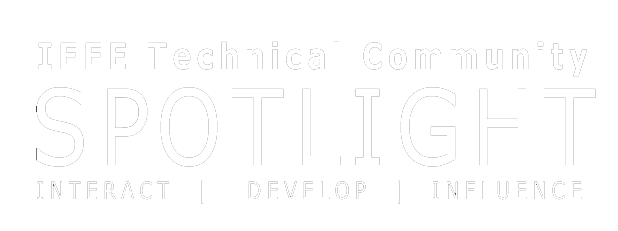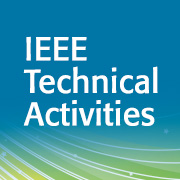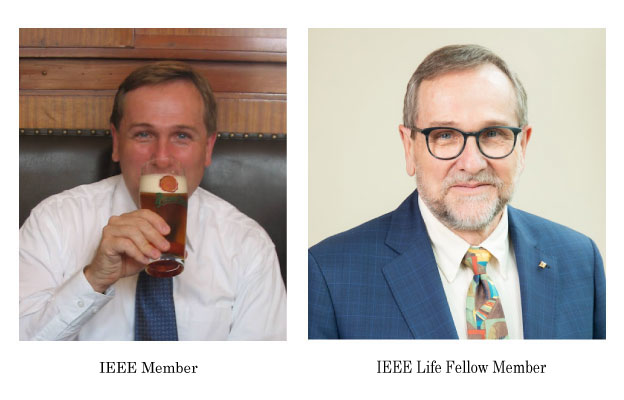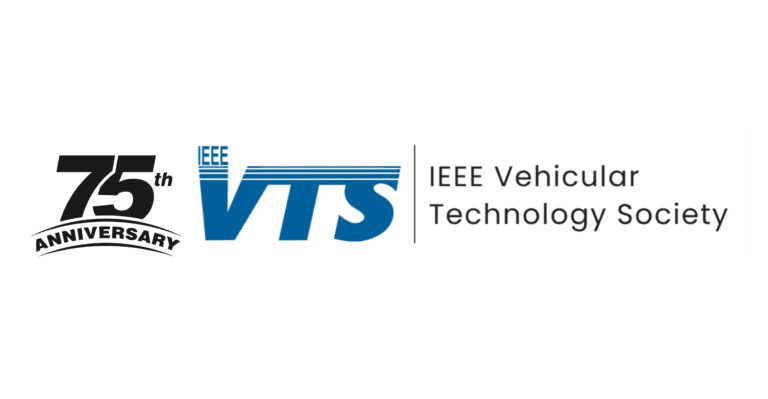
Wanda Reder, IEEE Division VII Director and member of the IEEE Power & Energy Society (PES) Governing Board, has held many roles within the IEEE, including becoming the first female president of the Society in 2008, and playing a large part in launching the IEEE Smart Grid effort in 2010. Currently the Vice President – Power Systems at S&C Electric Company, headquartered in Chicago, USA, Reder has been drawn to advancing new technology in the power industry throughout her extensive career in the industry. Her efforts as primary leadership of the IEEE Smart Grid Initiative, as well as a proponent of the IEEE PES Scholarship Plus Initiative, illustrate her passionate commitment to not only pioneering new ways of implementing emerging power technology, but to ensuring that there is a sufficient pipeline of up-and-coming power engineers to perpetuate growth within the field.
Reder has not lost sight of what led her to pursue a career in power engineering. She admits, “I grew up on a ranch in Western South Dakota, and I didn’t know what an engineer was.” An exceptional student in math and science, she was approached by an algebra teacher as a freshman in high school who encouraged her to think about continued studies in a subject other than solely mathematics. “That was the beginning, and I had a lot of confidence in her opinion, so from that point forward, I was on a path for engineering.”
After college, Reder held numerous positions at US-based electric utilities spaces, including Excelon and Northern States Power. Earlier in her career, she implemented one of the industry’s first programs that advanced what now underlies Smart Grid investments. But it wasn’t until accepting a new position in Chicago, where her predecessor had the obligation of organizing the PES General Meeting, that she was put in direct communication with the PES Board. “When I moved to this city,” Reder reminisces, “I walked in not knowing anybody, but had this Chicago PES meeting I had to organize.”
On Building an Industry Pipeline
This experience proved to be fruitful, as it directly pertained to a concern that plagued Reder in her new career role as Vice President in the utilities space. “It became obvious to me in that role that we were downsizing the organization, that we weren’t bringing in any new talent, and we were getting greyer. But I didn’t know what the trends were in both the United States, and also globally.” She began to take on research to better understand the demographics. Wanda began to suspect that the problem was not just at her company, but might be industry-wide. Through her studies she realized that it might be a problem better solved through the IEEE PES than by any individual company or utility in their sector. She proposed to PES the task of defining the problem for the entire industry, and then finding ways the collective could tackle it and mitigate risks for the future of Power Infrastructure staffing.
Through her research with the IEEE PES Workforce Ad-Hoc Committee, Reder noticed that the average age of the technical folks across the PES member utilities was approaching 50, the number of power curriculums were decreasing, and the number of students taking power engineering was on the decline. “It was a perfect storm of attrition, with very little educational infrastructure,” she says. Reder took the initiative to change the branding around what “power and energy” was for engineers, and documented the problem with a team of collaborators, eventually making recommendations to build up the educational infrastructure, and attract talent into the pipeline in order to build up both the academic and industry sides.
When Reder became PES President in 2008, she continued on her mission to engage potential power engineers, working to rebrand the Society itself because PES, then the Power Engineering Society, was not attracting members in their 20s, 30s, and even 40s. The Society underwent a name change and created two peer-reviewed journals on Smart Grid and Sustainable Alternative Energy. “These were an effort at recognizing that there was new technology out there, and that the grid needed to be modernized in order to facilitate both the ‘greening’ of society and changing mix of energy sources. These forces added together were pushing the sector toward a much more distributive model.” For these reasons, Reder also launched and co-chaired the IEEE PES Scholarship Plus Initiative, sponsored by both the Society and the IEEE Foundation. Since the Initiative’s beginning in 2011, over 700 scholarships have been released to attract the best and brightest students, at an early point in their studies, to lure them to power careers and increase the power engineering pool.
Building Collaborative Environments
Reder admits these efforts within PES were successful, but that it became apparent to her that within the IEEE it was difficult to work across IEEE as an enterprise, and “bring together people with different backgrounds and technical communities while leveraging the broad reach of IEEE into Standards, Education, and Geographic Activities.” Reder reinforces that bridging these different organizational units of the IEEE led to another grand initiative: “This is the genesis of why Smart Grid was created; to build an environment where we could invite both members and non-members of IEEE to interact, so that we could have the benefits of [a number of technical disciplines].” To date, about half of the Technical Societies within IEEE have participated in the Smart Grid movement.
Just as, under Reder’s presidency, PES successfully attempted outreach to a wide array of people, the Smart Grid movement evolved in parallel, through the use of social media. By using platforms such as LinkedIn and Twitter, and instituting communications such as a monthly e-newsletter, those behind Smart Grid have “been able to create communities that have been able to be more collaborative in nature than the traditional communities we’ve had in IEEE.” And the global impact has been astounding: says Reder, enthusiastically, “I talk to people and I don’t even know them, and they say they’re a member of IEEE Smart Grid. It’s kind of amazing the reach that it’s had, even when I travel abroad.” It has had a much faster and stronger impact than the initial team imagined it would.
Reder’s endeavors throughout her many roles have truly led to her realization of this impact, stating, “It really points to the power that IEEE can have, because it has such a strong foundation with 400,000 to 500,000 members, and all the pieces that IEEE had right at the get-go. Getting those involved to work together makes it even stronger. Adding the dimension of social media allows people to work across silos or barriers that have grown up over time. Tools like social media let people lend their expertise much more freely than what we’ve been able to do before.”
The Importance of Diversity
While championing the strengthening of both student and emerging technologies channels, Reder points out another under-represented group whose inclusion could fortify the IEEE and the power engineering sector: maintaining a steady number of women and minority participants as well as finding ways to integrate them into leadership groups and panels. “I believe that a diverse group tends to come up with a much more balanced and holistic solution,” she says, “It’s important for IEEE to create venues and to sponsor those kinds of interactions. I really do think the future is dependent on that very diverse interaction as we go forward, blending the kind of social media high-tech quick-innovation differences of perspective with a very traditional approach as an experience space.”
Reder cites an interesting fact: “The majority of all spending is actually controlled by females. If females are largely the decision-making and purchasing part of the equation, we need to do a much better job at bringing their thinking into the design, the engineering, the marketing, and even at the Board level, because that perspective will help form and ultimately guide the end result. If you connect those dots, any organization, whether industry, academic, or IEEE, should be doing a lot more to get females into the technology equation in a meaningful way.
Reder concludes with a call-to-action for not just future IEEE leadership, but to potential leaders of industry and academia, as well: “I’m a big believer in that we should have a leadership mix that’s ‘as-if’ — that’s how we WANT to look; not how we DO look. This immediately suggests that the Boards should be diverse in nature, and that we need to be proactively opening the doors to gender diversity and age mixes on our leadership group. We need to make these leadership teams look like we want the organization to look over time, and not necessarily how they look right now. It’s really important to think hard about these placements to the extent that you can influence them.”
Resource Links:






4 Responses
Diversity is a good thing, smart grid is a step in the right direction, but neither of them will solve the main problem. That’s a new source of low cost energy. I mean *really* low cost, low enough that we can use it to make cheap synthetic hydrocarbons for transport fuels out of water and CO2 pulled out of the air.
My idea of a smart grid would be one that was fed with full time renewable energy and diverted the difference between supply and current demand into hydrogen production for synthetic fuel.
Details if you are interested.
Great article from Ms. Wanda Reder. I have followed her career. I know since her time with S&C, she was responsible for the rebuilding of the Eastern New Mexico University (ENMU) primary distribution system from 4 kV to 13 kV. I grew up in New Mexico, attended New Mexico State University, and was in Prof. Bill Kersting’s first class. Worked for WEPCO in Milwaukee, New Mexico Electric Service Co., and worked with consulting firms in Texas and New Mexico in power engineering projects. Thanks for the great article by Wanda Reder. Also am a Life Member of IEEE.
Real motivating article. All electrical engineers, irrespective of their specialization, will benefit by reading this piece.
Very interesting article. Thanks for the time and energy to produce such a document.
On a somewhat different “circuit”.. I am wondering if a certain amount of common humane interest in a project would help bring together researchers to contribute in a non-competitive stewardship effort, to, for instance, improve the nation. One such project would be to research and investigate what can be a more effective solution to cell phone dependence and understanding. We have become a society very dependent on a wireless “system” that really has no firm foundation for growth, health and maintenance. The tower questions – the evolution on insite cell micro towers – the non-uniformity of the technology of what is the coverage and acceptable reception – articles like the tragic result as reported in the article in IEEE Spectrum; “Couple Found Dead for Lack of Signal”; 15-May-2012.
Even our emergency teams of first responders are using this same wireless system that has more holes than bad silicon chips on an 8 inch wafer.